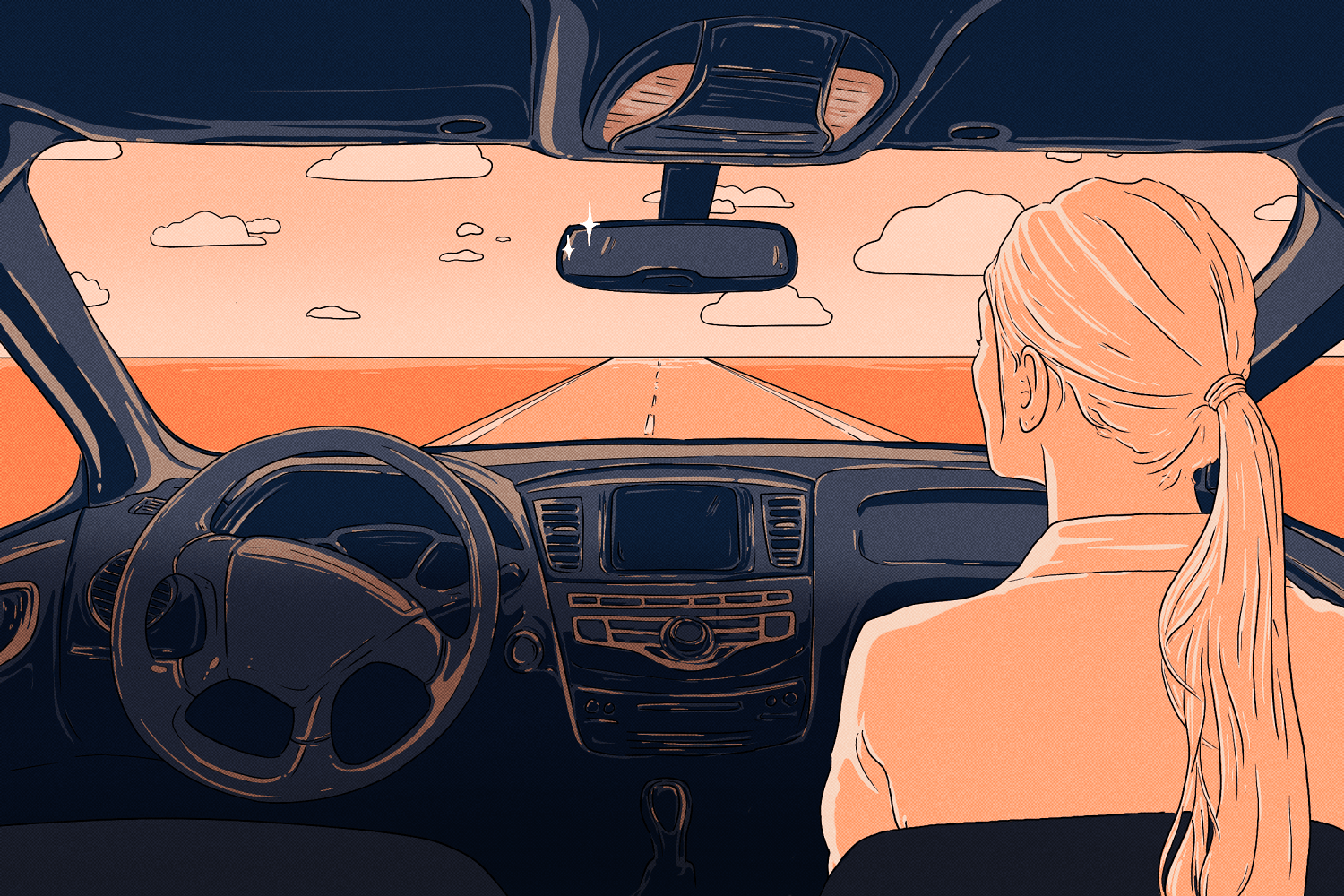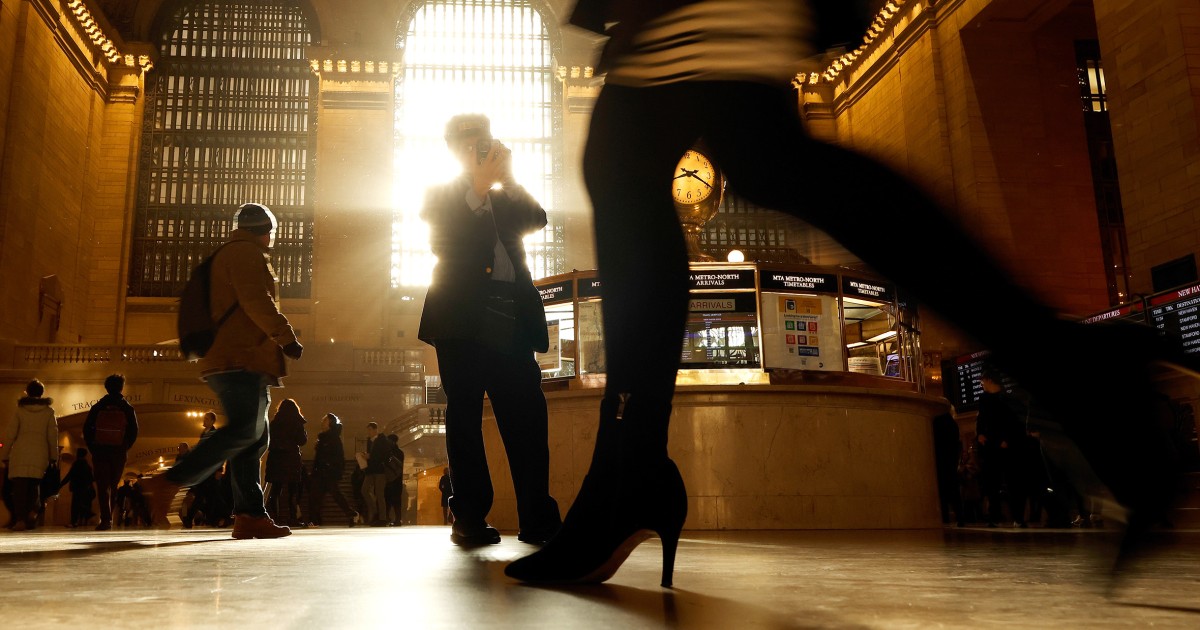
Autonomous taxis are winning over women in cities like San Francisco by offering an answer to a long-standing concern about ride-hailing apps: misbehavior by human drivers, especially men.
Some women said in interviews that they’ve mostly stopped using Uber and Lyft, the two most popular ride-hailing apps, and have switched instead to a driverless competitor, Waymo, at least in part because they don’t have to share physical space with an unfamiliar man behind the wheel. In autonomous taxis, software drives the car with no other human present.
Veronica Pastore, 40, a nonprofit worker in San Francisco, said she switched to Waymo about six months ago and that it’s now her default choice when she needs a ride. Concern about drivers is one of the reasons, she said.
“I’ve been in one late at night and thought, ‘This is great. I don’t have to worry about a stranger taking me home,’” she said. Pastore said some of her friends have had scary experiences with ride-hail drivers and she feels fortunate not to have. “It’s always in the back of my mind,” she said.
Reported violence by a ride-hail or taxi driver is rare. Lyft and Uber say that reports of safety violations — which they define as a fatal crash, fatal physical assault or sexual assault ranging from nonconsensual kissing to rape — occur in about one ride out of every 500,000. The most serious violations are especially rare, and in some instances drivers are the victims of violence, not the perpetrators.
But even if the chance of driver violence is low, some women said in interviews that they’d rather not take the risk, especially if a driverless option is available. Some also said they’re worried about behavior that doesn’t show up in company-issued transparency reports, such as unwelcome flirting. And the potential risks affect more people than cisgender women, as some men, nonbinary people and transgender people have reported similar concerns.
Now, those driver safety concerns are helping to fuel the popularity of autonomous taxis — especially for women traveling alone or at night.
Abby Vigil, 23, said she’s had creepy experiences with multiple drivers from ride-hailing services, including male drivers asking her prying personal questions and one asking her on a date. A data analyst in San Francisco, she said she now uses Waymo’s robotaxis when she’s not driving her own car or taking transit.
“It’s easier to feel like you’re in your own space,” she said.
Robotaxis operate similarly to Uber and Lyft, with riders hailing a ride via an app by putting in their location and their destination. In Waymo’s case, the fleet is generally standardized, with riders always getting the same make and model of vehicle. The price rises and falls with demand, and riders said their experience is that robotaxis cost about the same as a Lyft or Uber ride.
About three-quarters of Lyft and Uber drivers are men, according to industry and academic surveys. In online forums where drivers for ride-hailing services discuss their work, many posters are pessimistic about their own futures as drivers — including because of what they call the potential safety benefits of autonomous vehicles.
But some drivers say they add value to a ride. In several recent incidents documented in videos on X and on TikTok, driverless Waymo riders were halted midride as people in masks blocked the vehicles and covered them with graffiti — leaving the passengers frozen. San Francisco police said they are investigating three such incidents that took place on Sept. 21.
“I would have never let somebody in my car be harassed like that,” said Jason Munderloh, a ride-hail driver in San Francisco and an organizer with Gig Workers Rising, a pro-driver organization.
“Having one person alone in a car is, unfortunately, inherently unsafe in the first place. A car does not protect you from the city,” he said.
In another recent incident, a female Waymo passenger posted a video on X of a ride through San Francisco in which two men stood in front of the driverless car she was riding in — paralyzing the vehicle while they asked for her phone number. The men eventually walked away. She wrote on X that Waymo’s support staff was helpful, but she expressed frustration that she was temporarily trapped in a situation that a human driver likely could have deterred or escaped from.
“Warning to women in SF,” she wrote. “I love Waymo but this was scary. … I may still take them but will be careful taking it alone.”
Waymo said in a statement that it takes such events “very seriously” even as they are “exceedingly rare.”
“We connected with the rider to ensure their well-being, and the rider was safe during the entire event,” the company said. Waymo employees can contact passengers through a speakerphone for safety questions or other reasons.
“In an instance like this, our riders have 24/7 access to Rider Support agents who will help them navigate the situation in real time and coordinate closely with law enforcement officers to provide further assistance as needed,” the company said.
How robotaxi companies handle rider safety is one factor that will likely determine whether and how quickly their vehicles spread in U.S. cities. So far, they’re in only a handful of cities.
Lyft said in a statement to NBC News that it continues to try to improve safety, including with driver background checks, driver ratings, driver education and an emergency phone line for passengers.
In 2023, Lyft started a feature, Women+ Connect, that allows women or nonbinary drivers to opt in to prefer riders who are women or nonbinary, and vice versa. Lyft says it’s a preference setting, not a guarantee, but it can mean reduced contact with men. It expanded the feature nationwide in February.
Uber said in a statement that it was building on its safety measures, which already include driver background checks, GPS tracking and a 911 button within the app for riders and drivers.
But Uber is also moving in the direction of driverless cars. Uber has announced partnerships with Waymo and at least 11 other autonomous technology companies, and when Waymo expands next year to two additional cities, Atlanta and Austin, Texas, the Waymo service will be available exclusively through the Uber app — not through Waymo’s own app.
“We will continue to build innovative safety features and policies that empower our community of users, as well as partner with the world’s leading developers for autonomous vehicles to help bring that technology to the world,” Uber said in a statement.
Uber CEO Dara Khosrowshahi told CNBC last month that Waymo had “really cool tech” and gave riders “an absolutely delightful experience.” Uber says on a website that it imagines a future “where autonomous vehicles and human drivers seamlessly work together.”
Politicians, regulators and consumers often talk about safety when they’re debating the future of driverless vehicles, but the focus is usually on the vehicles’ ability to avoid collisions or stay out of the way of emergency vehicles, rather than on what happens inside the vehicles.
Waymo, though, is keenly aware that its service might have special appeal to women or other vulnerable communities. The company has signed partnerships to boost its visibility among women, including with basketball star Diana Taurasi of the WNBA’s Phoenix Mercury and The Women’s Building, a female-focused community center in San Francisco.
Megan Neese, Waymo’s head of product and customer research, said that in company surveys, female customers place a greater emphasis on both safe driving and their own personal safety.
“Women rate these things consistently higher than men. So we do see that there’s an opportunity to build something,” she said. She added that female Waymo passengers are more likely than male customers to say in surveys that the service has improved their sense of personal safety while getting around.
Waymo declined to share the current gender breakdown of customers, but Neese said the company is making progress toward parity. The early adopters skewed male, she said.
She also said the company recently reached a gender milestone of sorts: Women who have signed up for the service ride at the same frequency that men do, meaning there’s gender parity in what the company calls rider engagement.
Waymo, which spun off from Google in 2016, is currently the bi autonomous taxi service in the U.S., but potential competition is on the horizon. General Motors’ Cruise division has slowly restarted operations in some cities with human safety drivers after one of its driverless cars collided with a pedestrian in San Francisco last year, an incident that prompted Cruise’s CEO to apologize and resign. Amazon’s Zoox division is planning a service in Las Vegas, and Tesla CEO Elon Musk has scheduled a robotaxi-related announcement for Oct. 10.
Waymo operates in San Francisco, Phoenix and parts of the Los Angeles area, with a small test in Austin and plans to expand in Austin and Atlanta in the coming months.
Even some skeptics see a potential upside. Jayka Noelle, a 21-year-old content creator, took a Waymo ride with friends during a trip to Scottsdale, Arizona, near Phoenix. Noelle said she wouldn’t take one where she lives in Los Angeles because she doesn’t trust an autonomous vehicle in L.A. traffic, but she said not having a driver “gives women peace of mind.”
The company is recruiting TikTok influencers to spread a similar message, and there are dozens of videos on the app with people saying they’re Waymo partners or ambassadors in cities where the service operates. Some are women talking about safety.
In May, as part of a paid partnership, a TikTok duo named DaBabyBoomers used the service to get to a yoga class, emphasizing what they called the safety benefits. The pair are two 66-year-old women in the Los Angeles area who’ve been friends since 1978.
One of them, Cheryl Baxter, said in an interview that taxi drivers have often made her nervous, and she’s been waiting decades for an alternative.
“I remember walking around airports and picking out who I thought would be the safest,” she said.
Her TikTok partner, Beth Bowles, said women have a shared experience of feeling nervous in a vehicle driven by a man.
“It’s like you have to check yourself the whole time,” she said. “You don’t want to come off as anything sexual. You just don’t want to be a woman.”








